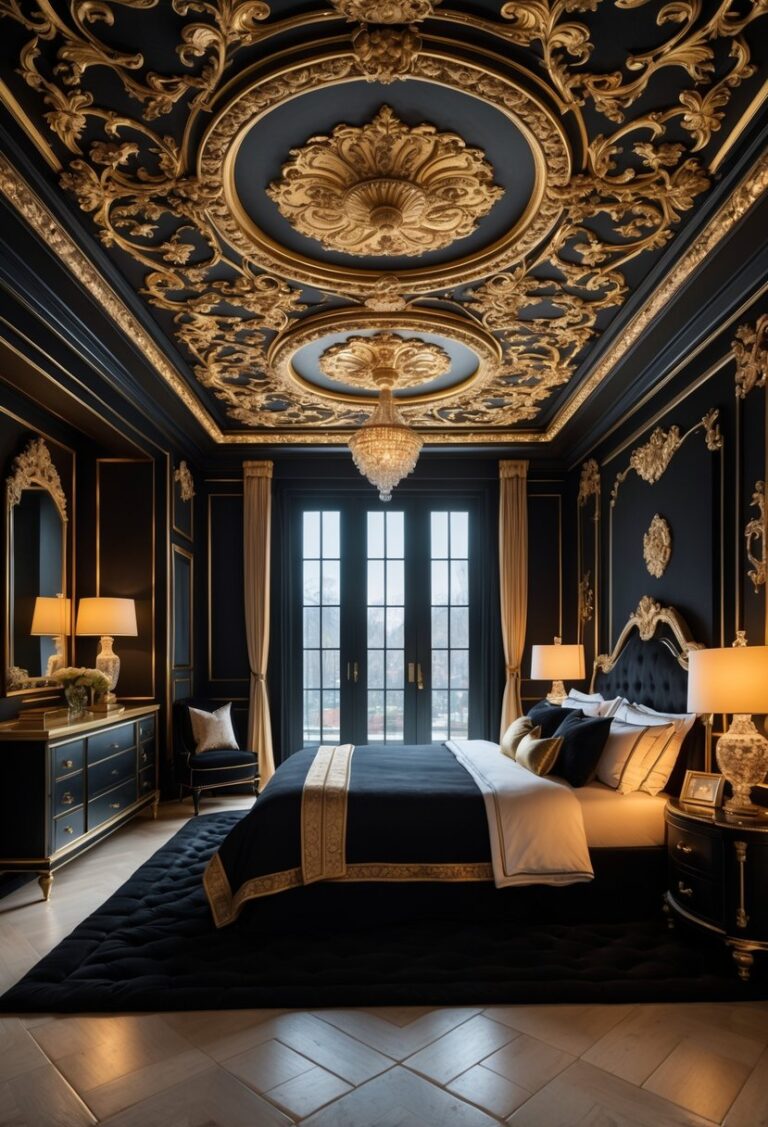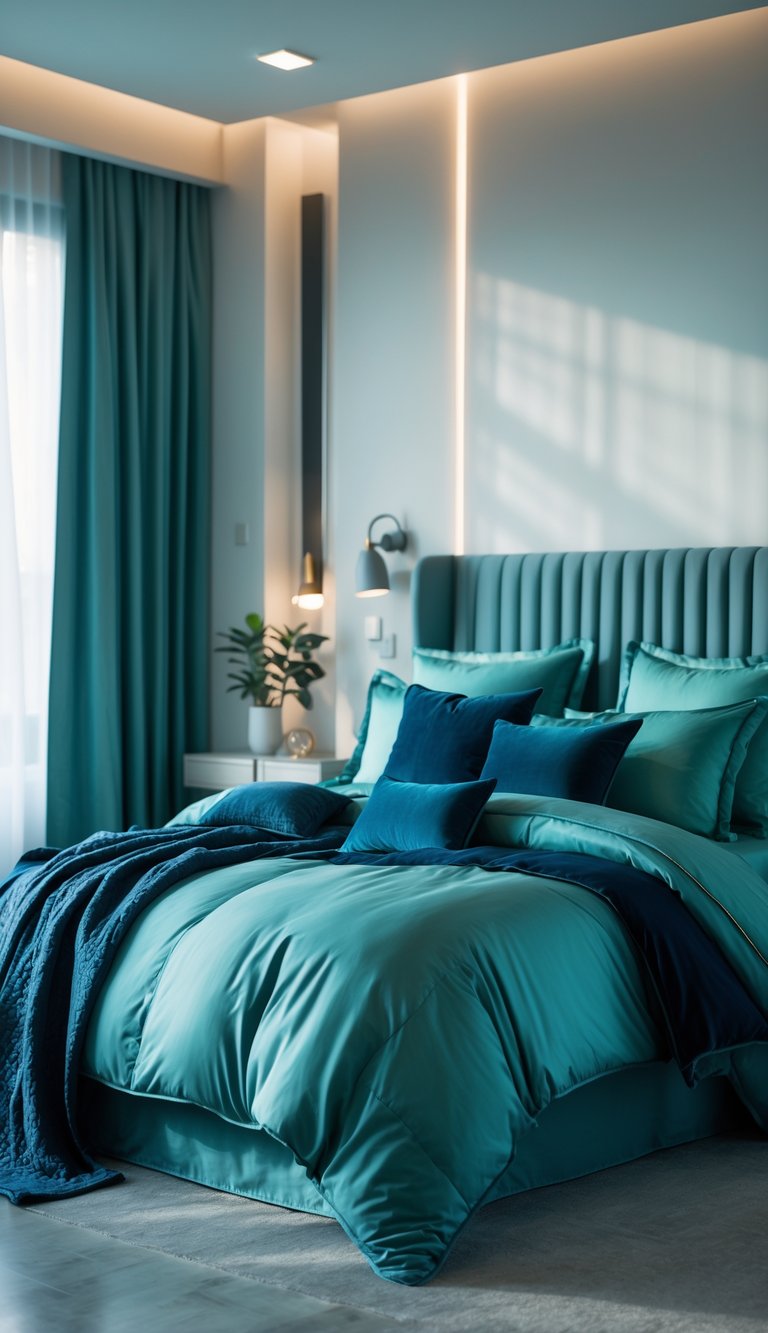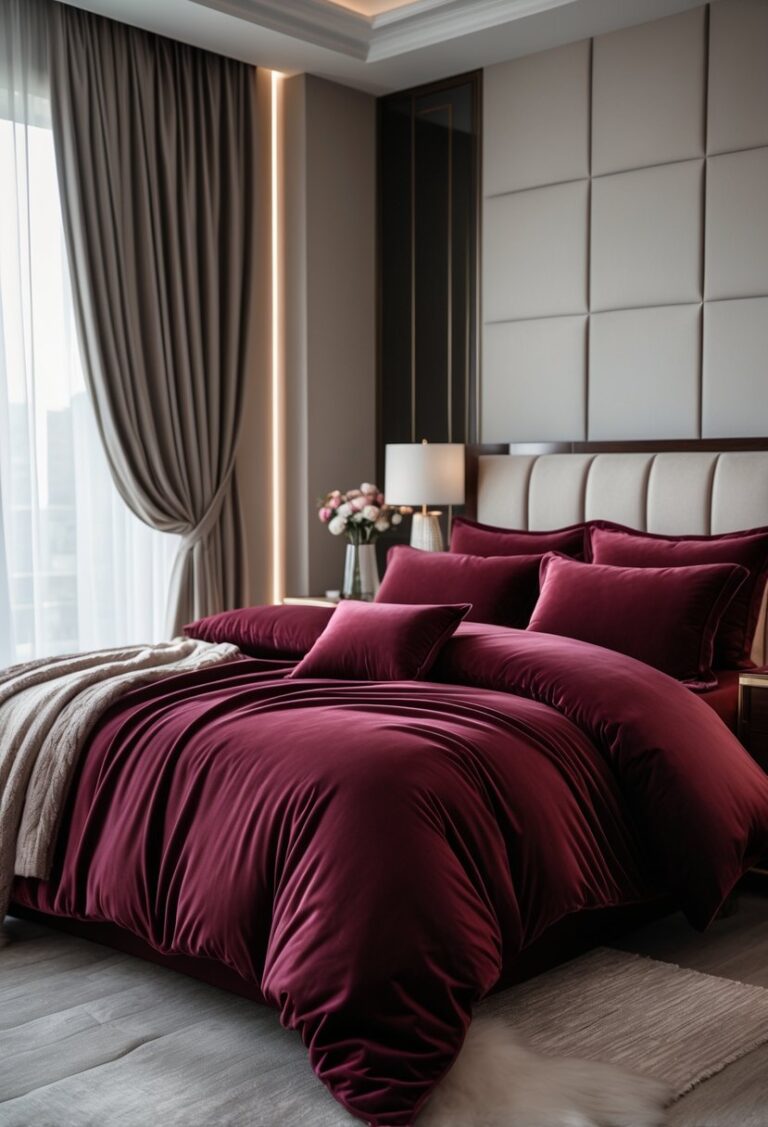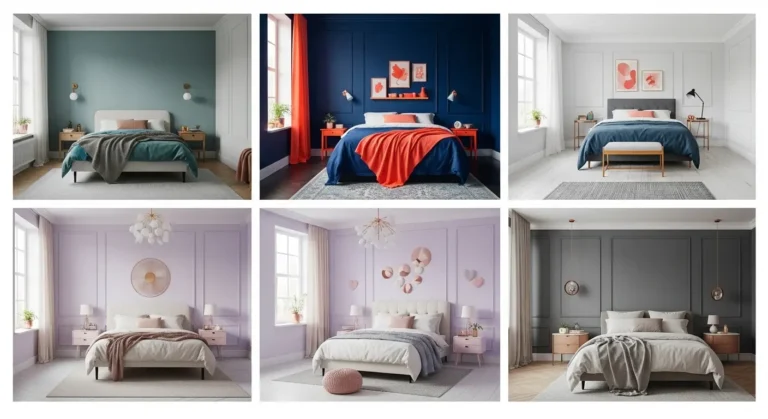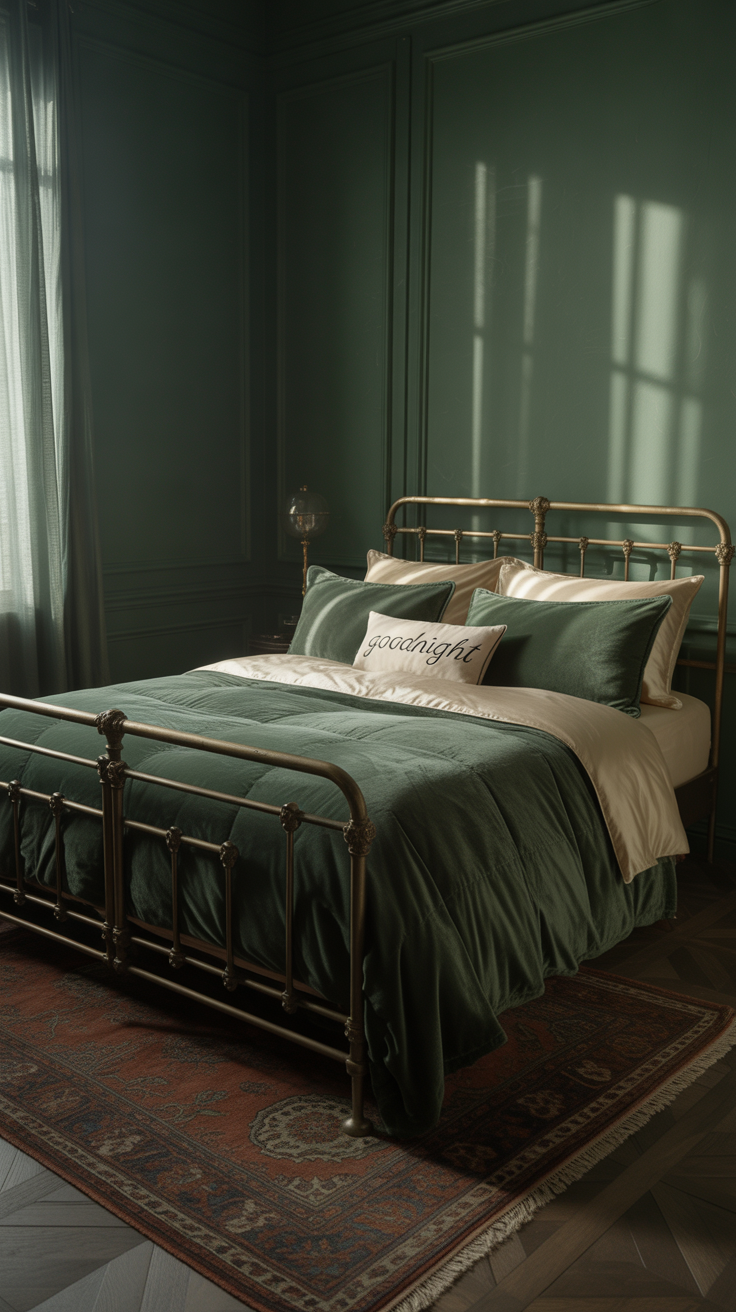White Bedroom Ideas to Transform Your Space: 12 Stylish Inspirations
White bedrooms offer a timeless and versatile option for creating a peaceful space. They provide a neutral backdrop that can suit many styles and preferences.
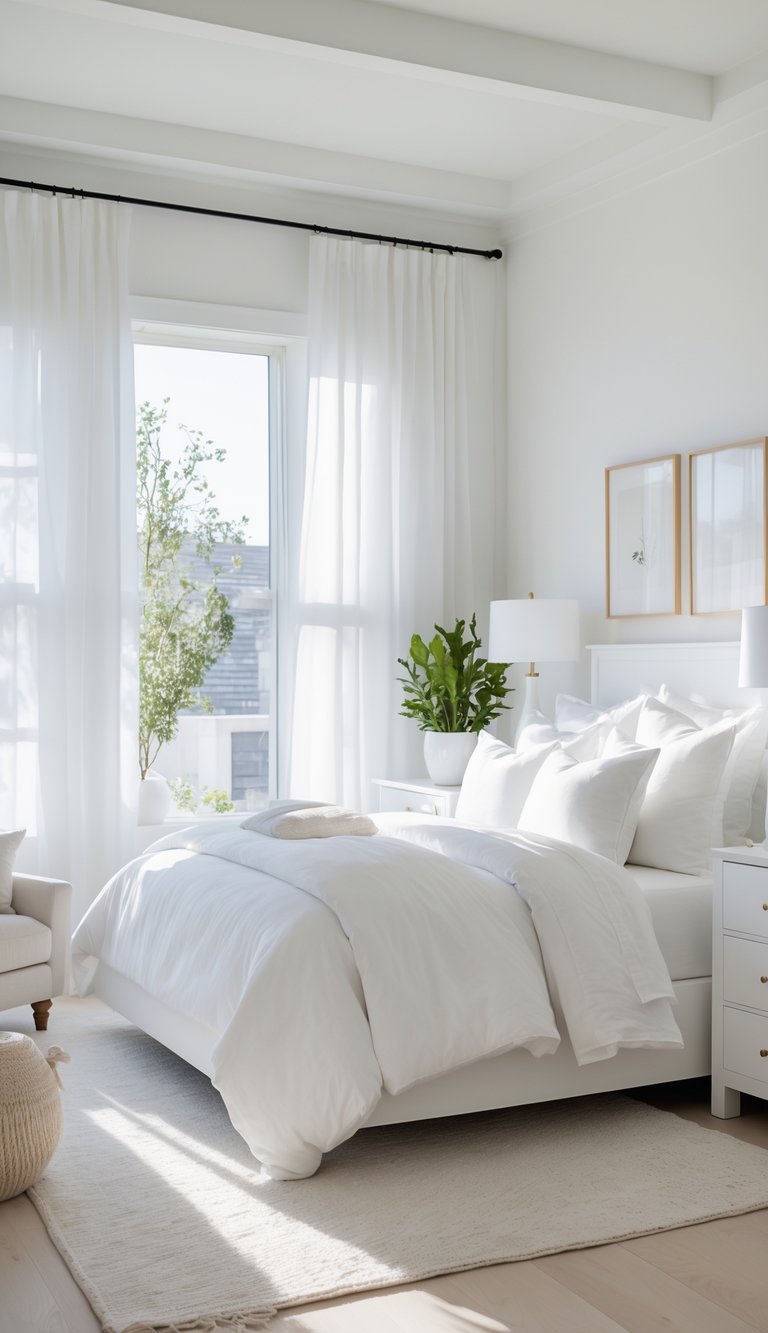
Using white as the main color in a bedroom allows for easy layering of textures and accents, making the room feel calm and inviting. Many find that white bedrooms bring a sense of clarity and freshness without overwhelming the space.
1) Layer textured linens in cream and bone shades
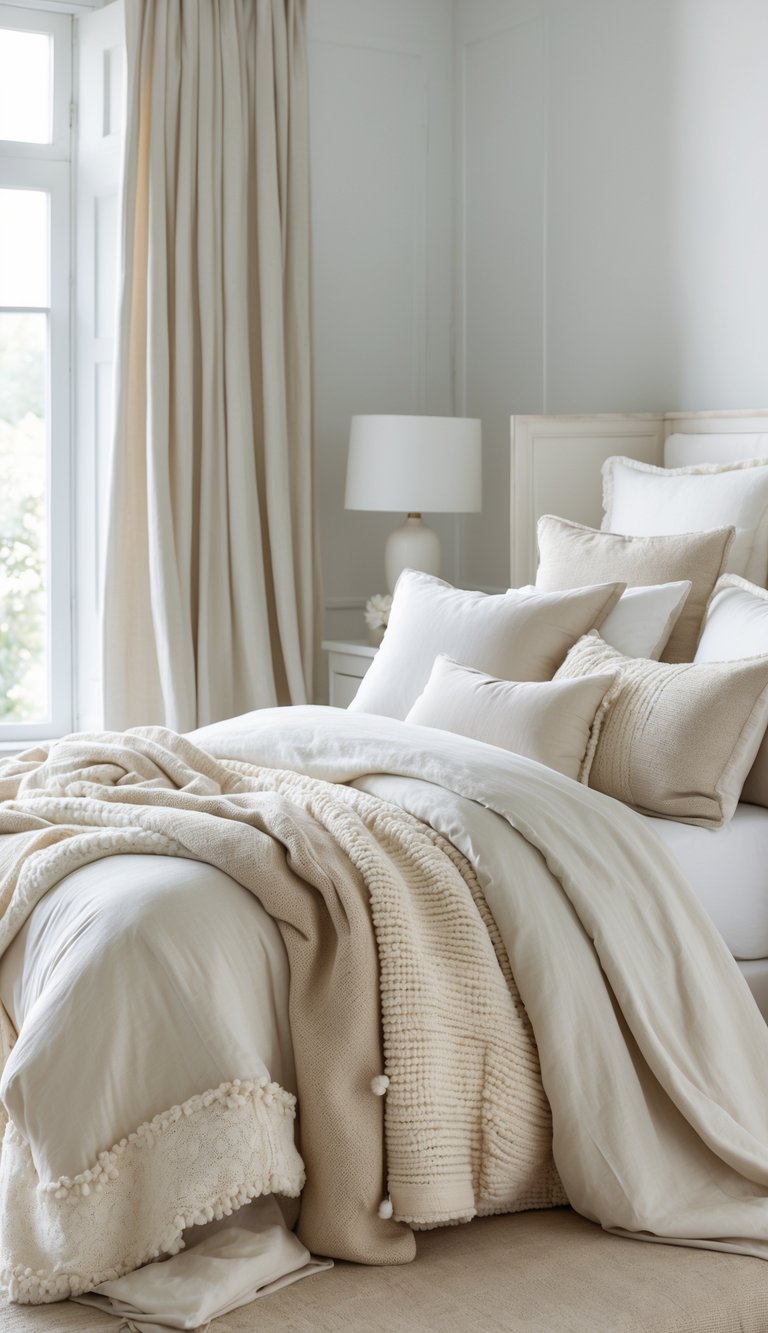
Layering linens in cream and bone adds depth to a white bedroom. Using different textures, like linen, knit, or velvet, creates a subtle contrast without changing the calm color scheme.
This approach makes the space feel warm and inviting while staying simple.
Soft, neutral tones blend well with each other and enhance light in the room. It also allows for easy mixing with other bedroom elements.
2) Install oversized upholstered headboards
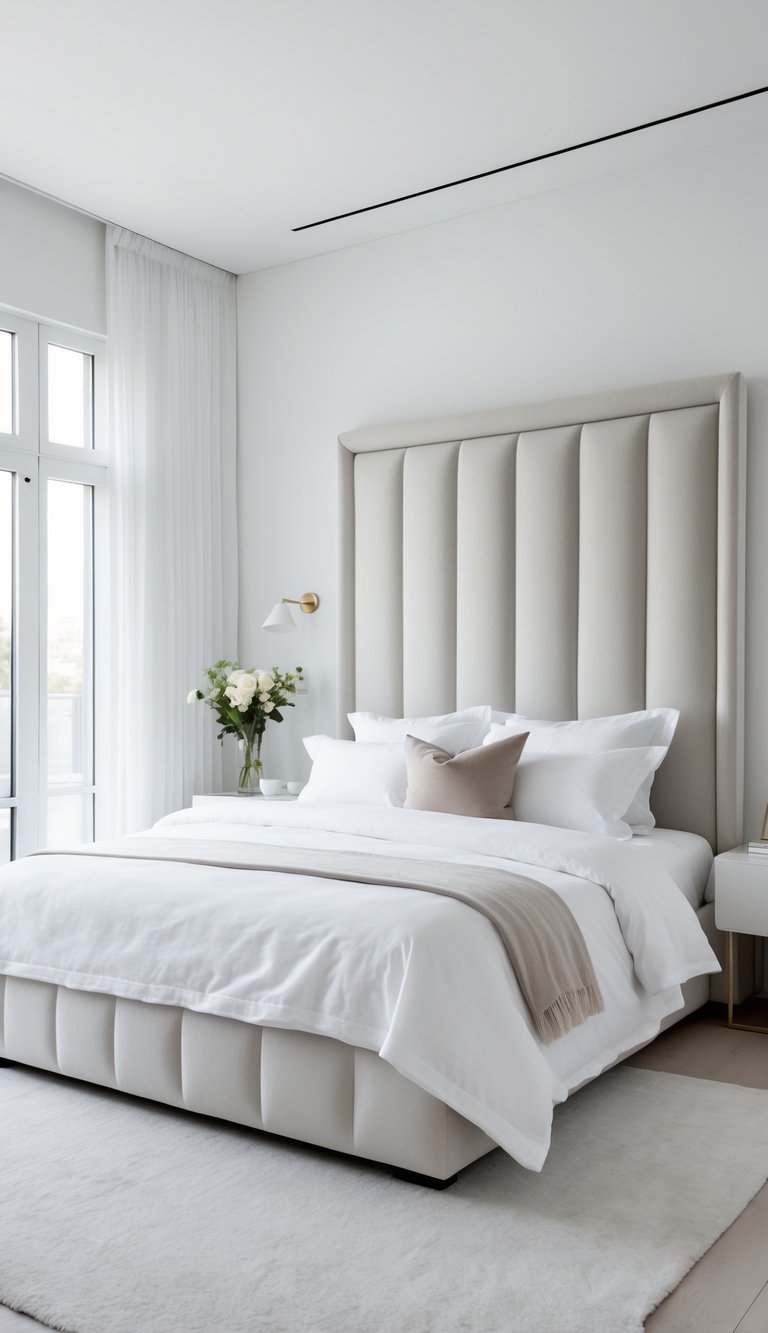
Oversized upholstered headboards add a bold, stylish touch to a white bedroom. They bring texture and softness, balancing the clean look of white walls and bedding.
These headboards can be simple or tufted, depending on the desired style. They also serve as a focal point that grounds the room without overpowering it.
Choosing light fabrics keeps the look airy and bright. This piece can tie together other furniture and decor in the space effectively.
3) Use plaster walls for subtle light reflection
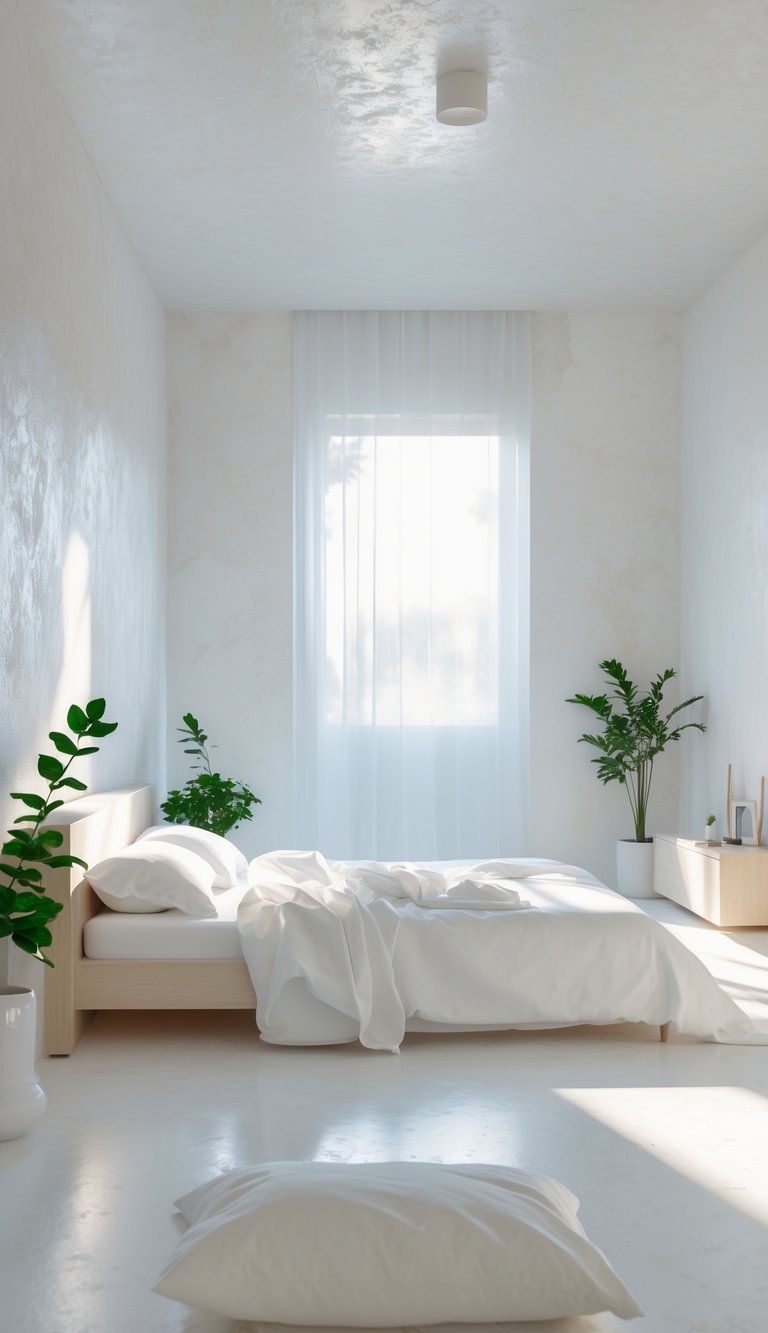
Plaster walls add a soft, natural texture to a white bedroom. They catch and reflect light in subtle ways, creating depth without glare.
This finish helps keep the room bright but calm. It works well with layered lighting and natural light to avoid flatness.
Plaster walls bring a quiet sophistication. They fit with many styles, from modern to traditional, enhancing a bedroom’s atmosphere.
4) Incorporate sculptural pendant lighting
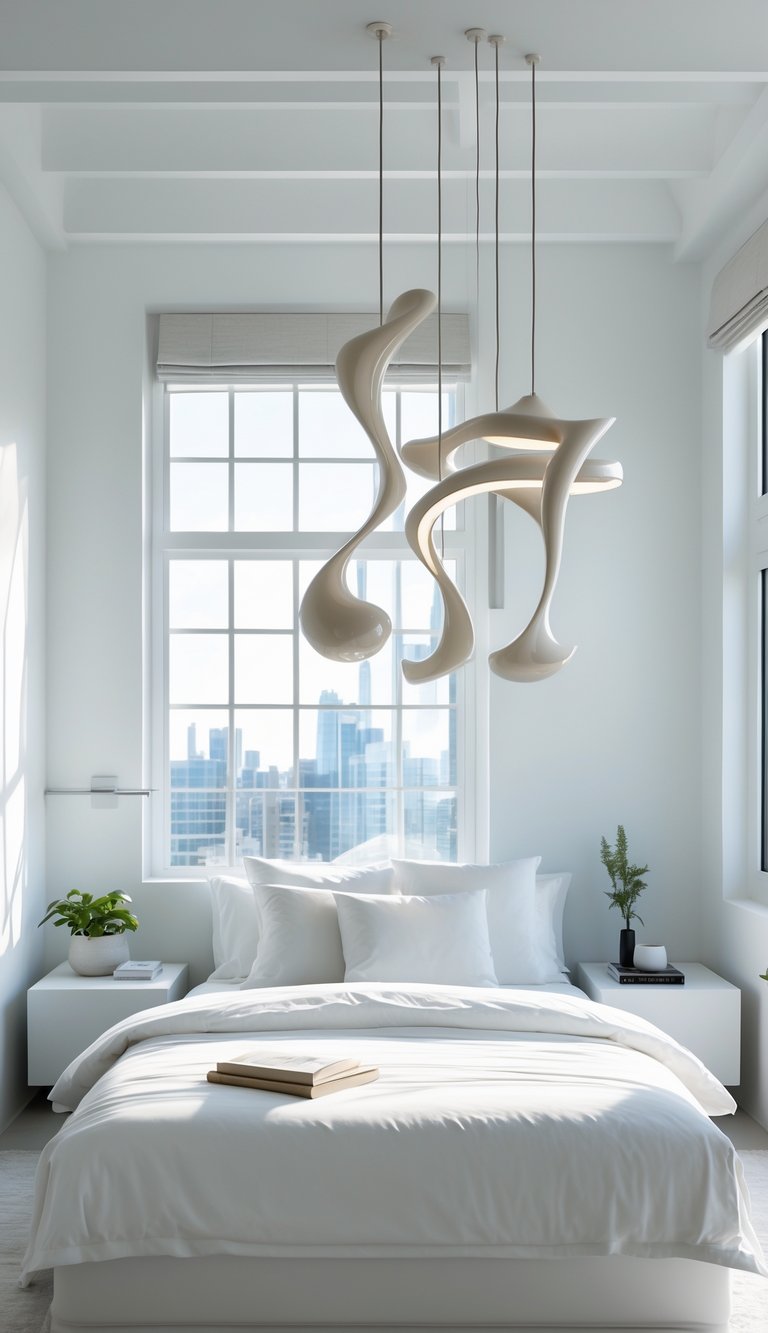
Sculptural pendant lighting adds a unique artistic touch to a white bedroom. It creates a focal point without overwhelming the calm and simple color scheme.
These lights serve both as decoration and practical illumination. Choosing adjustable or minimalist designs helps balance style and function.
Using white or clear materials for the fixtures blends them smoothly into the space. This keeps the room feeling light and open while adding visual interest.
5) Add warmth with layered rugs in natural fibers
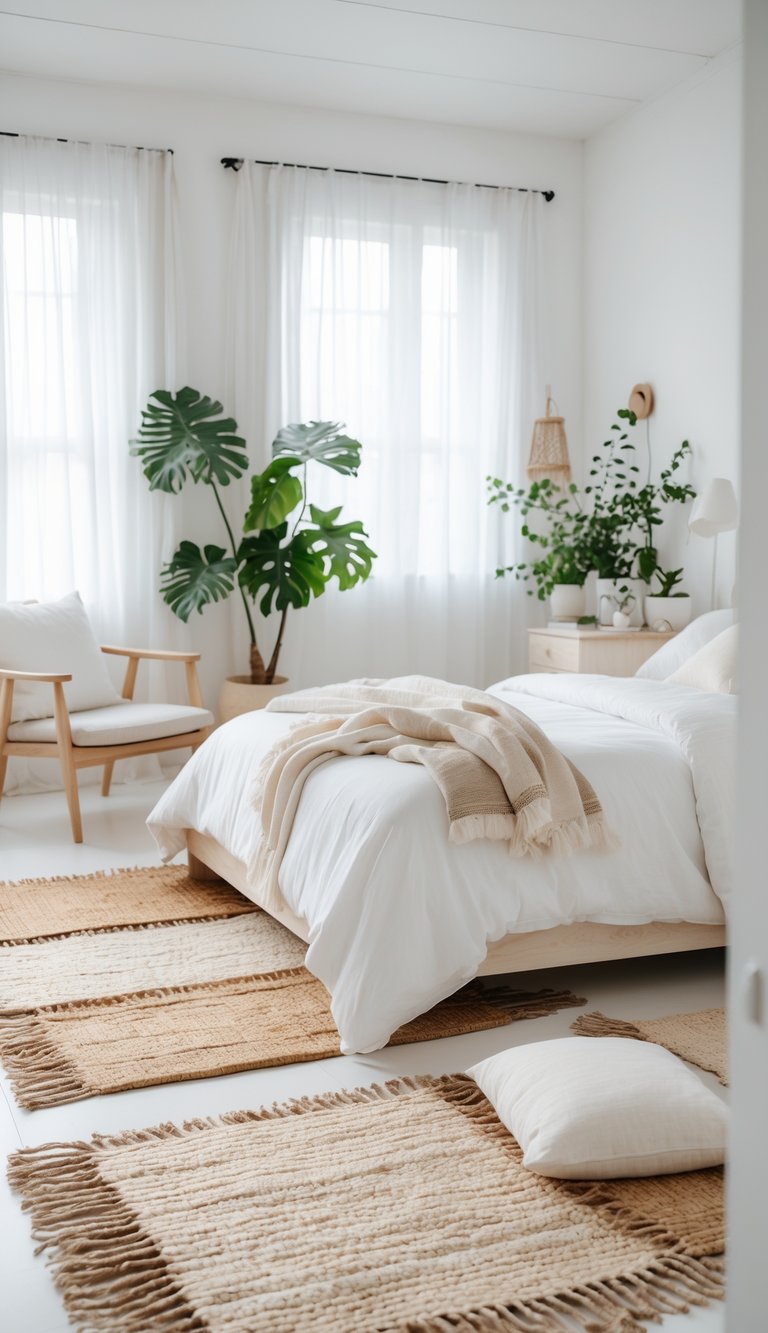
Layering rugs made from natural fibers like jute, sisal, or wool creates warmth in a white bedroom. These materials add texture without overpowering the space.
Using different sizes or shapes of rugs brings depth and visual interest.
Natural fiber rugs also complement wood furniture and neutral tones, making the room feel cozy but simple.
6) Mix matte and glossy white paint finishes
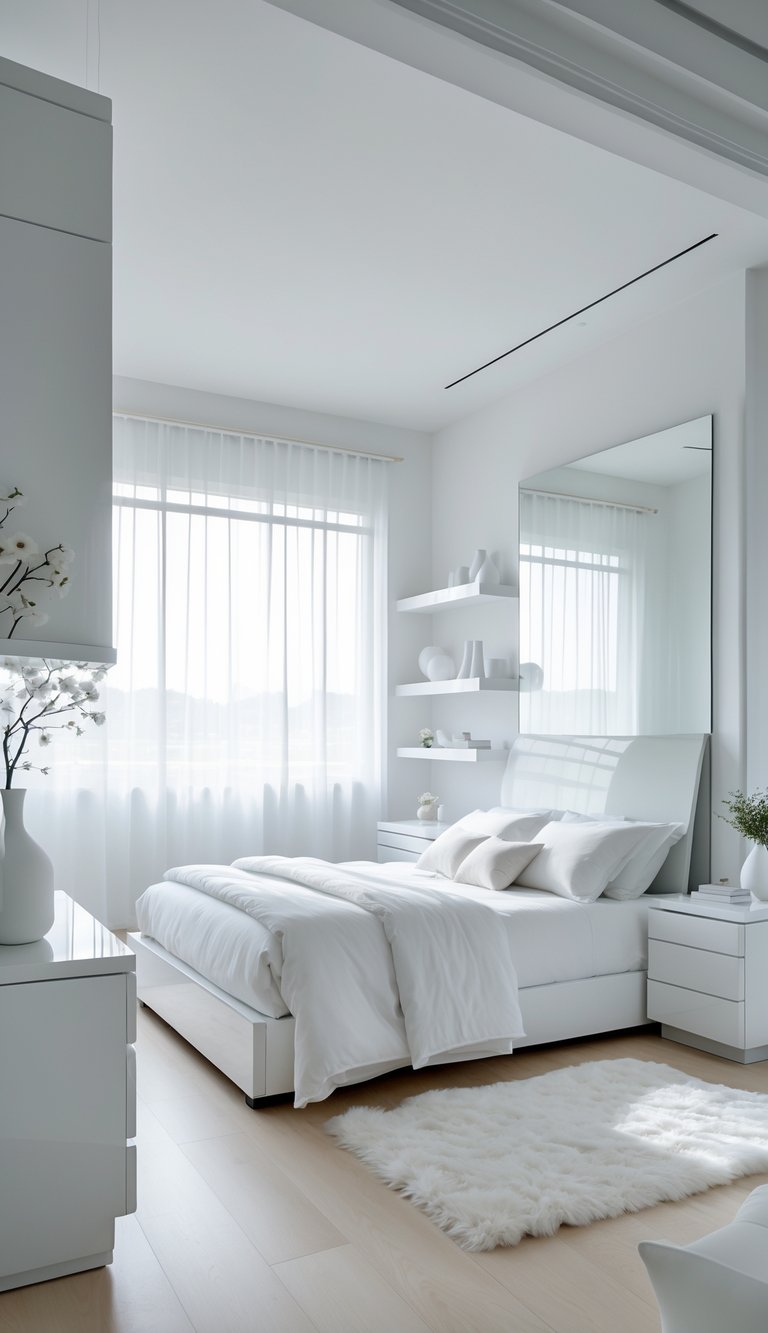
Using both matte and glossy white paints adds depth to a white bedroom. Glossy finishes reflect light and create subtle highlights. Matte finishes offer a soft, smooth look that balances shine.
Combining these finishes on walls, trim, or furniture helps create visual interest. The contrast brings texture without needing extra colors. This technique makes the room feel more dynamic and polished.
7) Highlight architectural moldings with white paint
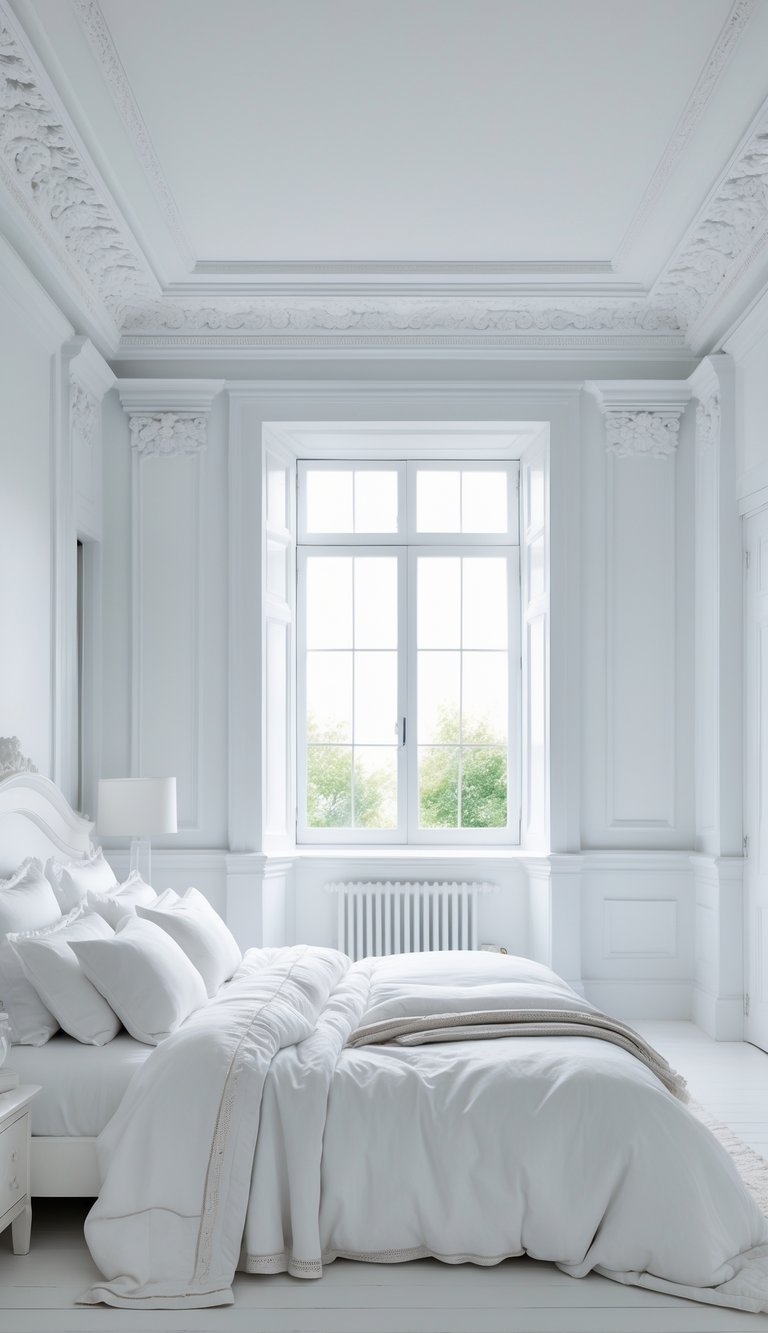
Painting architectural moldings in white draws attention to the room’s details. It creates a clean, crisp look that adds subtle interest without overwhelming the space.
Using a glossy white on moldings against matte white walls helps the features stand out. This technique adds depth and elegance to a simple bedroom design.
White moldings can frame windows, doors, and ceilings, making the room feel more polished. It works well with both modern and traditional decor styles.
8) Choose minimalist white furniture with clean lines
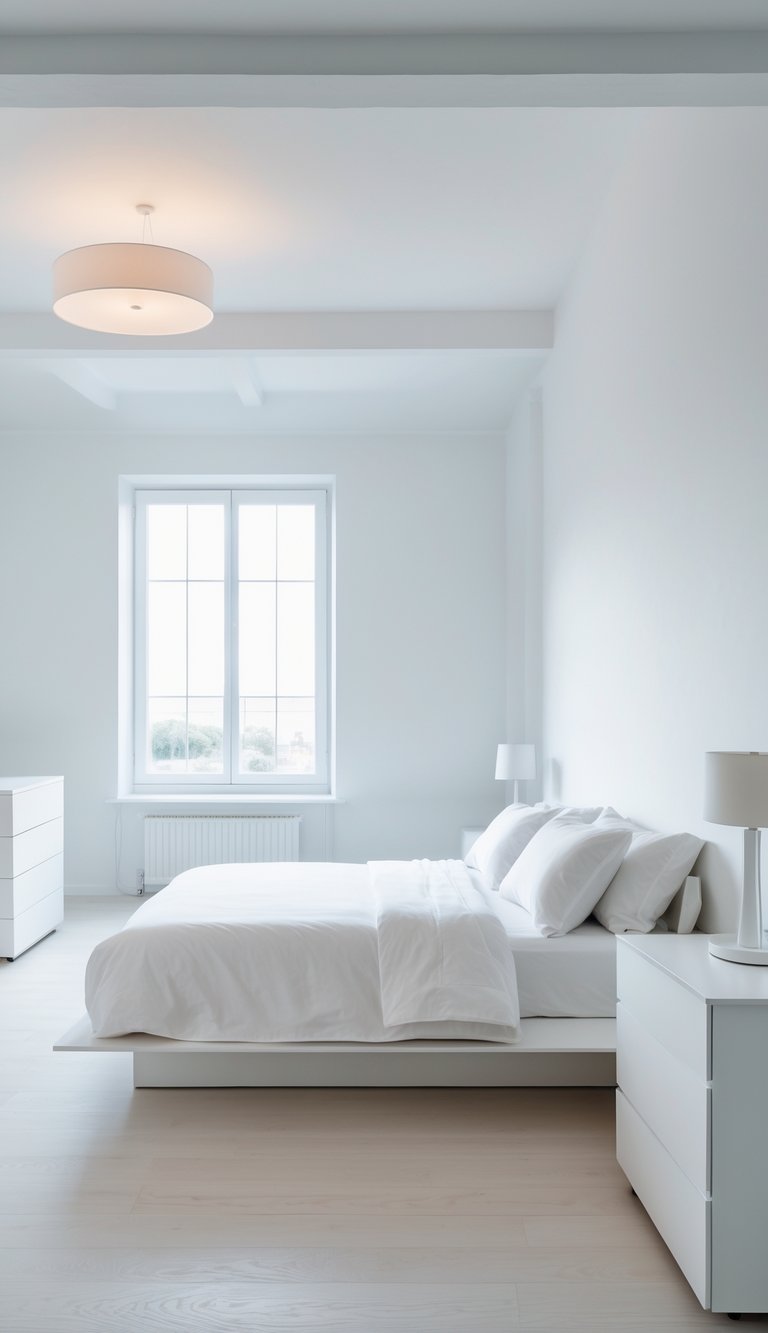
Minimalist white furniture helps create a calm and open atmosphere. Pieces with simple shapes and no extra details keep the room looking neat.
Clean lines in beds, dressers, and chairs add a modern feel without clutter. This style fits well with a white color scheme, enhancing brightness.
Choosing furniture this way supports a peaceful space that feels both fresh and functional. It also makes the bedroom easier to organize and decorate.
9) Use high-contrast black-and-white artwork
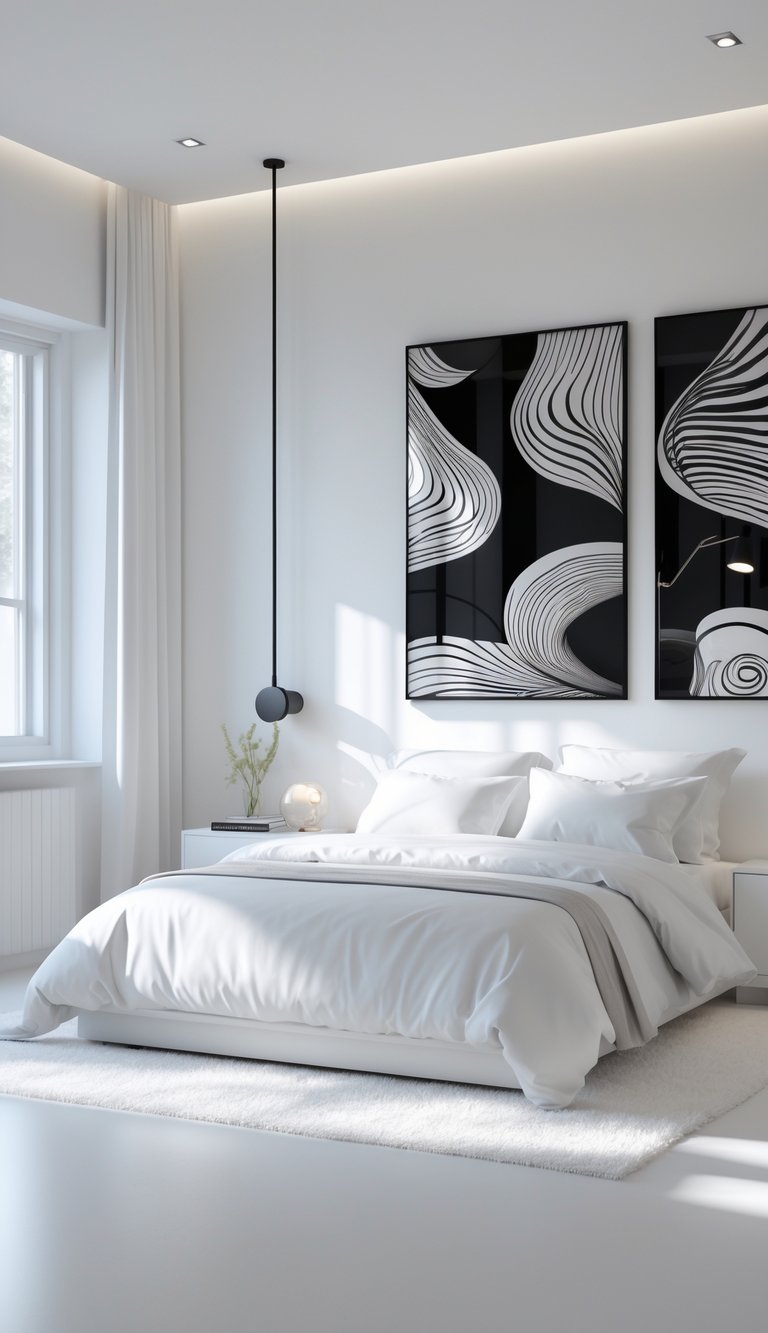
He can add strong black-and-white artwork to create a striking contrast in a white bedroom. Bold pieces like brushstroke art or cityscape prints catch the eye without overwhelming the space.
Placing the artwork above the bed or on a main wall helps balance the room visually. This choice keeps the look clean and modern while giving the bedroom character.
10) Layer curtains in sheer white and heavier fabrics
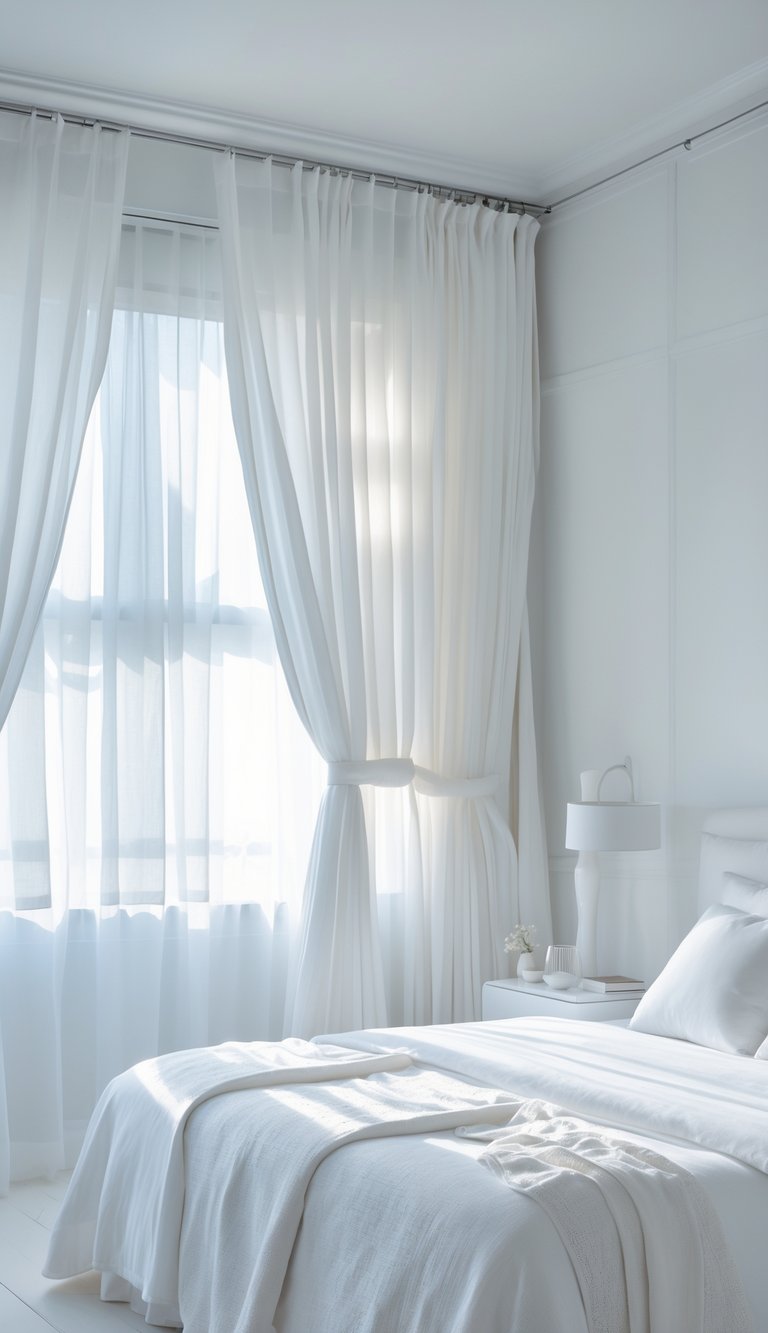
Layering sheer white curtains with heavier fabrics creates a balance between light and privacy. Sheer curtains let natural light in while maintaining softness in the room.
Heavier curtains add privacy and can help block out light when needed. This combination also allows for better control of temperature and mood.
Using multiple layers adds depth and texture to the bedroom decor without overwhelming the space. It is a simple way to enhance both function and style.
11) Add natural wood accents for warmth
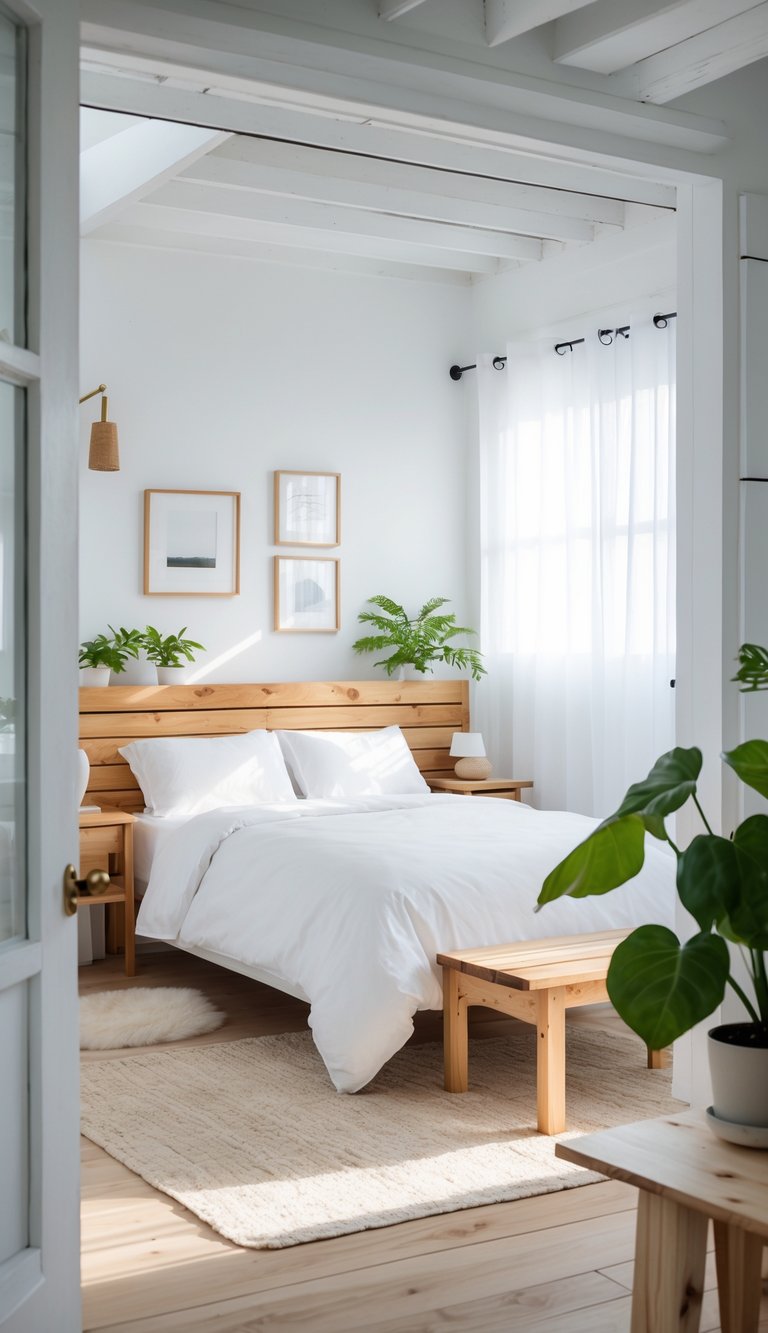
Natural wood accents bring warmth and texture to a white bedroom. They balance the coolness of white with earthy, inviting tones.
Wood furniture like nightstands, dressers, or benches adds a rustic touch without overpowering the space.
Soft wood tones create a calm atmosphere. They help make the room feel more cozy and welcoming.
12) Use woven baskets for storage and texture
Woven baskets provide practical storage while adding natural texture to a white bedroom. They keep items like towels, blankets, or accessories organized without clutter.
Their simple, earthy look contrasts well with white walls and furniture. This mix creates a warm, inviting space that feels balanced and clean.
Baskets also work well on shelves, floors, or as hanging storage. They combine style and function in an easy way.
Benefits of a White Bedroom
A white bedroom offers clear advantages that affect mood, lighting, and space perception. Choosing white as the primary color helps in creating a relaxed setting, makes the room feel brighter, and can visually enlarge smaller areas.
Creating a Calming Atmosphere
White walls and furnishings promote a sense of calm. The lack of strong colors reduces visual distractions, which can help the mind relax after a busy day. This peaceful environment supports better sleep and lowers stress levels.
Using different textures like linen, wool, or cotton on white bedding and curtains adds warmth without disrupting the calm feel. This layering of soft materials prevents the room from feeling cold or sterile. A calm atmosphere is ideal for a bedroom where rest and recharge are priorities.
Enhancing Natural Light
White surfaces reflect natural light more efficiently than darker colors. This means a bedroom with white walls and ceilings will stay bright throughout the day, even with limited sunlight.
This increased light reflection makes the room feel fresh and open. It also helps reduce the need for artificial lighting during daytime, which can save energy. For rooms with small windows or limited light sources, white is a practical choice to enhance brightness.
Visual Expansion in Small Spaces
White creates an illusion of more space by opening up the room visually. Small bedrooms painted or decorated predominantly in white feel less cramped and more breathable.
When combined with minimal, light-colored furniture, white can make a tight space seem larger. Using white on multiple surfaces—walls, floors, and bedding—unifies the room and prevents visual clutter, which helps maximize a small bedroom’s potential.
Design Tips for a Cohesive White Bedroom
Creating a balanced white bedroom requires attention to texture, color accents, and natural materials. These elements work together to add interest and warmth without breaking the calm, clean look of an all-white space.
Layering Textures for Depth
Using different textures helps prevent a white bedroom from feeling flat or cold. Soft fabrics like linen, cotton, or wool add a tactile quality that invites comfort. For example, pairing a smooth duvet with a chunky knit throw or velvet pillows creates visual variety.
Hard textures can also be part of the mix. Wood furniture, woven baskets, or a jute rug introduce structure and natural contrast. Layering these materials in the bedding, furniture, and decor enhances depth and keeps the room visually engaging.
Choosing Accent Colors
Accent colors should be used carefully in a white bedroom to maintain the serene atmosphere. Soft, muted tones such as pale gray, beige, or dusty blue work well without overpowering the white base.
These colors can appear in pillows, artwork, or small furniture items. Darker accents like black or navy can add sophistication but should be limited to avoid harshness. Using a consistent color palette helps keep the room cohesive and calming.
Incorporating Natural Elements
Natural elements ground a white bedroom and add warmth. Wood finishes on bed frames or benches introduce an organic touch. Plants and fresh flowers bring life and subtle color while enhancing air quality.
Natural fibers such as linen, cotton, and wool complement the white scheme and add comfort. These elements make the space feel inviting and connected to the outdoors without disrupting the clean aesthetic.
Frequently Asked Questions
A white bedroom can be brightened with color through pillows or art. Small spaces benefit from smart furniture choices. Luxury comes from rich textures and detailed lighting. Warmth is added with natural fibers and layered rugs. Modern designs allow for unique accessories. Bedding colors should complement the white theme without overwhelming it.
How can I accent a white bedroom to add a touch of color?
Accent pillows and area rugs are easy ways to bring in color. Vintage artwork or greenery also adds personality without cluttering the room. Bright accents should be used sparingly to keep the space calm.
What are some space-saving ideas for decorating a small white bedroom?
Choose multi-functional furniture like beds with storage drawers underneath. Keep wall decor simple and avoid large, bulky items. Use light, airy curtains to make the room feel bigger.
What design elements will create a luxury feel in a white bedroom?
Oversized upholstered headboards add a soft, inviting look. Sculptural pendant lighting introduces elegance. Plaster walls create subtle light reflection, giving depth and richness to the space.
How can I make a white bedroom feel warm and inviting?
Layer textured linens in cream and bone shades to soften the starkness. Adding rugs made from natural fibers brings warmth underfoot. Use warm-toned lighting to create a cozy atmosphere.
In what ways can I customize a modern white bedroom design?
Incorporate unique art pieces or handmade crafts to reflect personality. Mix in different textures like leather or wood for contrast. Choose minimalistic furniture with clean lines but add bold shapes in lamps or decor.
What color bedding complements a white bedroom theme?
Neutral shades like cream, beige, or soft gray work well with white. These colors maintain calmness while adding depth. For a bit of contrast, soft pastels or muted blues can be included without overpowering the white.

